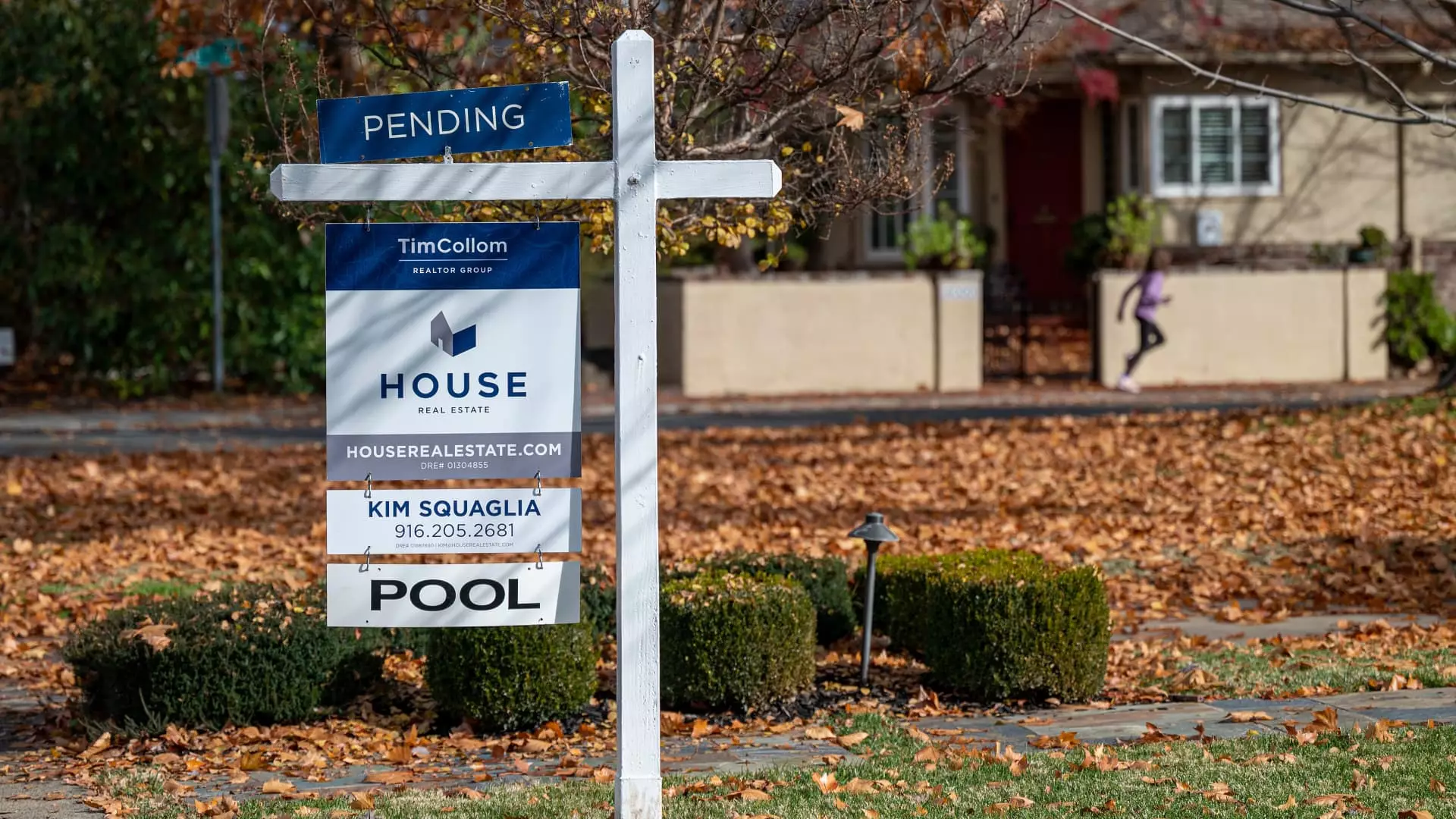The current state of the housing market is causing immense concern among both buyers and sellers. With a toxic mix of high mortgage rates, soaring prices, limited supply, and pent-up demand, the housing market has become a daunting landscape to navigate. This article delves into the underlying factors contributing to this challenging situation and explores the potential impact on various market participants.
The Covid-19 pandemic saw an unprecedented surge in demand for housing, which drove prices to new highs. Additionally, the 30-year fixed mortgage rate has reached alarming levels of 8%, the highest in decades. This combination has further compounded the difficulties faced by both buyers and sellers. Mortgage demand has plummeted to its lowest point in nearly 30 years, intensifying the struggles in the market.
A Paradigm Shift
The past two years witnessed an influx of liquidity into the housing market, as the Federal Reserve reduced its benchmark rate to zero and injected funds into mortgage-backed securities. This resulted in historically low mortgage rates and an overwhelming buying frenzy. The sudden shift to remote work and the exodus from urban areas also fueled this surge. Consequently, home prices skyrocketed by 40% from pre-pandemic levels.
However, the landscape changed as inflation soared, prompting the Fed to raise rates. Ironically, this had an adverse effect on the housing market, making it even more expensive. Typically, rising rates cause home prices to decline, but the current market is different due to its severe lack of supply. The Great Recession of 2008 deeply impacted homebuilders, leading to an underbuilding trend that has persisted for over a decade. Consequently, the housing market continues to face a scarcity of available homes.
A Catch-22 for Sellers
Would-be sellers find themselves in a challenging predicament. They are reluctant to trade their existing mortgages with rates as low as 3% for a new purchase burdened by 8% mortgage rates. This decision paralysis results in a constricted supply of available homes. Matthew Graham, Chief Operating Officer at Mortgage News Daily, aptly describes the situation as “worse than the great financial crisis in terms of volume and activity.”
However, while supply remains stagnant, foreclosures are remarkably low in comparison to the foreclosure crisis era. Most homeowners currently boast historically high levels of home equity. The abundance of homeowners who refinanced to record-low interest rates also translates to affordable housing costs. Although this fortifies the position of existing homeowners, it hampers potential buyers, as they are left with limited options.
Anxiety permeates the buyer mentality, resulting in a wait-and-see approach. Uncertainty about the market’s future trajectory drives many to remain on the sidelines. Consequently, the National Association of Realtors (NAR) has lowered its 2023 sales forecast, projecting a decline of up to 20%. This significant revision marks a substantial shift from the previous forecast of only a 13% drop.
Despite this gloomy outlook, there are regions that buck the trend. Metropolitan areas with robust job growth and relatively affordable prices are expected to experience an upswing in sales. Lawrence Yun, the chief economist for the NAR, specifically points to Florida markets such as Tampa, Jacksonville, and Orlando, as well as Houston, Texas, and Memphis, Tennessee.
The Silver Lining for Buyers
Potential buyers may find solace in the fact that homebuilders, particularly large production builders like Lennar and D.R. Horton, are proactively addressing affordability concerns. These builders are buying down interest rates for their customers, a departure from past practices. A spokesperson from D.R. Horton acknowledges their shift, stating that the company had not previously offered such broad-based incentives.
Although construction of single-family homes is slowly increasing, it still falls short of meeting demand. Builder sentiment reflects this shortfall, further dampened by rising rates. Nevertheless, the market for new homes remains more active than the market for existing homes.
A Cooling Rental Market
An interesting phenomenon emerges from the current housing landscape: apartment rents are finally cooling off. This is attributed to a record influx of new rental supply. Consequently, potential renters are less incentivized to transition into homeownership. However, the demand for rentals continues to rise. Jay Parsons, Chief Economist at RealPage, attributes this to slowing inflation and a strong job market, which boosts consumer confidence and encourages household formation among young adults more likely to rent apartments.
The Dilemma for Upgraders and Downsizers
Buyers seeking to upgrade to larger homes or downsize face a quandary. Prices continue to rise due to the supply-demand imbalance, but sellers are gradually becoming more flexible. As a result, buyers must weigh the decision to purchase at higher rates and hope for future price reductions or wait until rates drop. However, when rates do eventually decline, a massive surge in demand and bidding wars are likely to ensue.
The Road Ahead
The housing market’s current challenges stem from a combination of factors: high mortgage rates, soaring prices, limited supply, and pent-up demand. Although the market presents significant obstacles for homebuyers and sellers, there are pockets of opportunities in certain regions. The involvement of larger production builders in addressing affordability concerns offers hope to prospective buyers. However, the market’s future trajectory remains uncertain, and buyers and sellers must carefully assess their options amidst this intricate landscape.


Leave a Reply